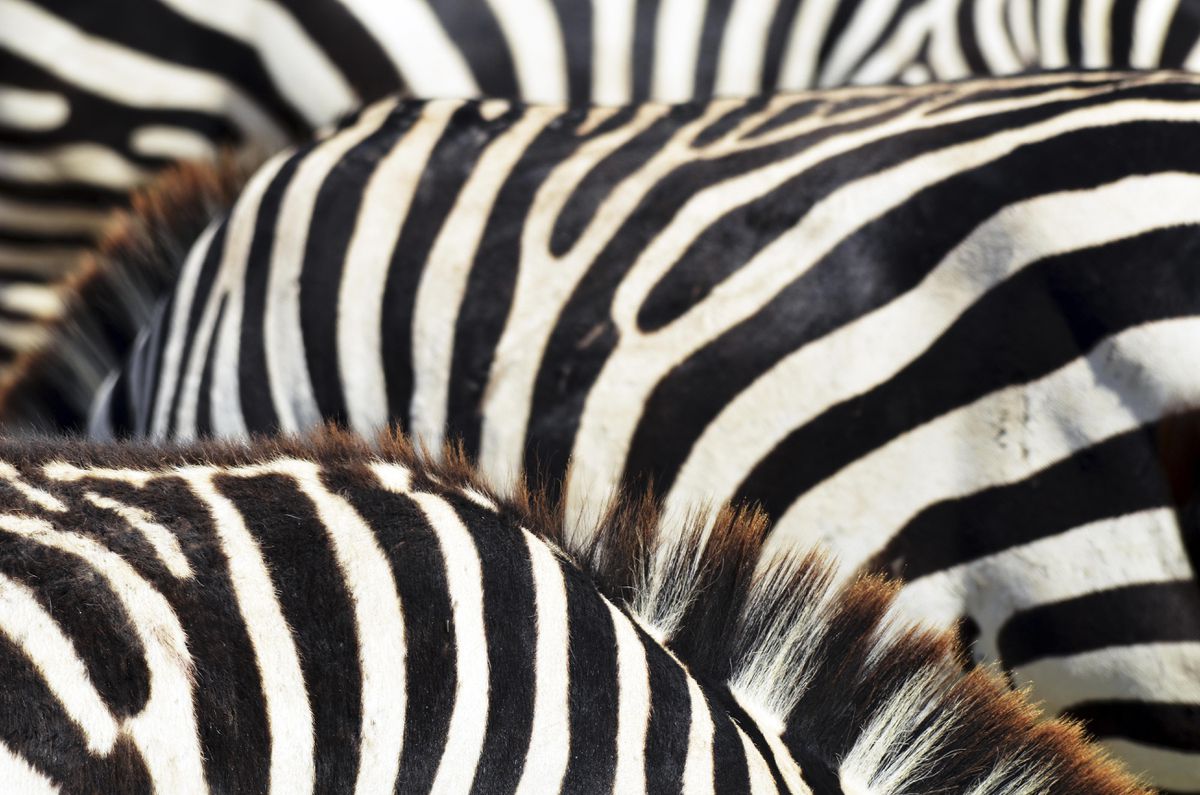
Kenya, Amboseli National Park, close up of zebra stripes.
getty
Why do zebras have stripes?
Scientists aren’t sure, but one theory, dubbed the “motion dazzle hypothesis,” suggests that high-contrast patterns create an optical illusion that makes it harder for predators to track animals as they run.
A new study published in Proceedings of the Royal Society B suggests that duller colors actually provide better protection from predators.
Researchers at the University of Exeter used a touch-screen electronic game and 75,000 volunteers to test what types of patterns make animals the hardest to track.
The game was set up at a tourist attraction in Cornwall. People who played had to try to catch a rectangular “bug” moving around on a screen. The background of the screen featured different black-and-white photos of natural bug habitats like rocks and tree bark.
The game attempted to simulate evolution. The first generation of bugs had 128 individuals with a range of black-and-white patterns including stripes, dots and neutral grey. After each bug was caught five times by different players, the 64 bugs that were caught the fastest were taken out of the game. The remaining 64 bugs were copied with slight mutations to create another 128 bugs.
After 40 generations, nearly all the bugs ended up with dull, grey coloring instead of interesting patterns. This suggests dull coloring that blends more with an animal’s surroundings, rather than contrasting stripes, is better for hiding from predators.
Senior author Laura Kelley said the research group expected to see stripes evolve, but that didn’t happen at all.
Benito Wainwright, a researcher at the University of Bristol who has studied camouflage, said the game used in the new study allowed the authors to witness evolution in action.
“Motion dazzle has been a long-standing adaptive explanation for the existence of stripes in the animal kingdom, the most famous example being the zebra,” he said. “However, this study suggests that matching your background is still more beneficial, which might explain why, when you think about it, not that many stripy animals exist, compared to grey ones at least.”
Ullasa Kodandaramaiah, a scientist at IISER Thiruvananthapuram in Kerala, India who has published papers about the motion dazzle hypothesis, said the new study is unique because of the game it used.
“Unlike previous experiments on the motion dazzle hypothesis which tested the effectiveness of a predetermined set of color patterns, color patterns in this study could ‘evolve’ depending on how beneficial they were,” he said. “The main finding — that motion dazzle markings may not be as effective as camouflage patterns, even when prey are moving — is not entirely new, but this is a landmark study in our quest to understand how color patterns can protect prey animals whilst in motion.”
One limitation of the study is that it was carried out on humans, not lions.
Kelley said the game was designed in black-and-white because humans perceive color differently than many other animals. Removing color took out one variable. She said it would be fun to try to train another species, like some type of bird, to play the game.
So what are the advantages of stripes?
They might help zebras avoid being bit by flies, said Kelley. She said previous research suggests the stripes confuse flies and make it harder for them to land.
Stripes also might confuse predators when zebras are in a group rather than running alone, according to Kelley. The game used in the new study shows only one bug on-screen at a time. Kelley said the results might have been different if there were multiple bugs moving together.
This article is auto-generated by Algorithm Source: www.forbes.com


